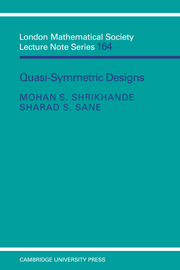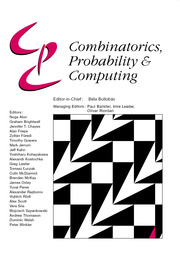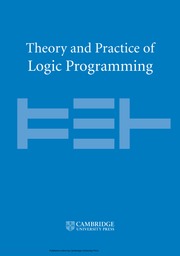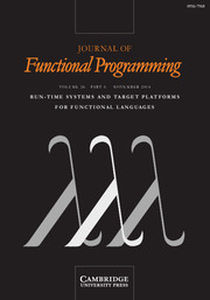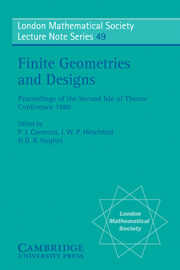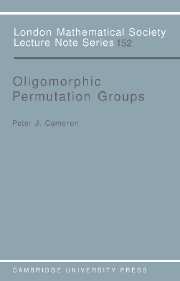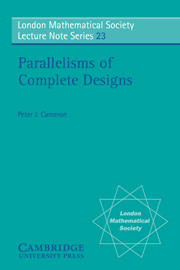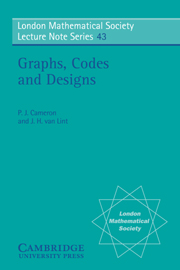Designs, Graphs, Codes and their Links
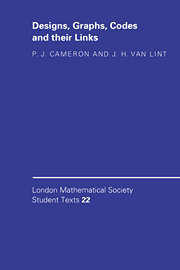
Designs, Graphs, Codes and their Links
J. H. van Lint , Technische Universiteit Eindhoven, The Netherlands
Looking for an examination copy?
This title is not currently available for examination. However, if you are interested in the title for your course we can consider offering an examination copy. To register your interest please contact collegesales@cambridge.org providing details of the course you are teaching.
This book stresses the connection between, and the applications of, design theory to graphs and codes. Beginning with a brief introduction to design theory and the necessary background, the book also provides relevant topics for discussion from the theory of graphs and codes.
- A really significant revision of a LMS Lecture Notes classic
- Its previous two 'editions' have sold 3500+ copies Graphs Codes & Design's (1980) 1600 sales Graph Theory, Coding Theory & Block Designs (1975) 1900 sales
Product details
March 2011Adobe eBook Reader
9780511879951
0 pages
0kg
10 b/w illus.
This ISBN is for an eBook version which is distributed on our behalf by a third party.
Often bought together
Designs and their Codes
: Hardback
Quasi-symmetric Designs
: Paperback
Often bought together
This title is available for institutional purchase via Cambridge Core
Learn more
Related Journals
Combinatorics, Probability and Computing
: Journal
Published bimonthly, Combinatorics, Probability & Computing is devoted to the three areas of combinatorics, probability theory and theoretical computer science. Topics covered include classical and algebraic graph theory, extremal set theory, matroid theory, probabilistic methods and random combinatorial structures; combinatorial probability and limit theorems for random combinatorial structures; the theory of algorithms (including complexity theory), randomised algorithms, probabilistic analysis of algorithms, computational learning theory and optimisation.
Theory and Practice of Logic Programming
: Journal
Theory and Practice of Logic Programming emphasises both the theory and practice of logic programming. Logic programming applies to all areas of artificial intelligence and computer science and is fundamental to all of them. Among the topics covered are AI applications that use logic programming, logic programming methodologies, specification, analysis and verification of systems, inductive logic programming, multi-relational data mining, natural language processing, knowledge representation, nonmonotonic reasoning, semantic web reasoning, databases, implementations and architectures and constraint logic programming.
Journal of Functional Programming
: Journal
Journal of Functional Programming is the only journal devoted solely to the design, implementation, and application of functional programming languages, spanning the range from mathematical theory to industrial practice. Topics covered include functional languages and extensions, implementation techniques, reasoning and proof, program transformation and synthesis, type systems, type theory, language-based security, memory management, parallelism and applications. Special tracks are devoted to tools and applications, commercial uses and education; pearl-type papers are encouraged. For more details see the Advice for Authors page..Manuscripts for consideration in the Journal of Functional Programming should be submitted electronically, via Scholar One ManuscriptsTM: http://mc.manuscriptcentral.com/cup/jfp_submit. See Instructions for Contributors.
Related Journals
Also by this Author
$55.00 USD
$50.00 USD
$59.00 USD
$50.00 USD
$55.00 USD
Also by this Author
Table of Contents
- 1. Design theory
- 2. Strongly regular graphs
- 3. Graphs with least eigenvalue -2
- 4. Regular two-graphs
- 5. Quasi-symmetric designs
- 6. A property of the number 6
- 7. Partial geometries
- 8. Graphs with no triangles
- 9. Codes
- 10. Cyclic codes
- 11. The Golay codes
- 12. Reed-Muller codes
- 13. Self-dual codes and projective plane
- 14. Quadratic residue codes and the Assmus-Mattson theorem
- 15. Symmetry codes over F3
- 16. Nearly perfect binary codes and uniformly packed codes
- 17. Association schemes.
- P. J. Cameron , Queen Mary University of London
- J. H. van Lint , Technische Universiteit Eindhoven, The Netherlands
Authors
Browse by related subject
- Abstract analysis
- Algebra
- Computational science
- Differential and integral equations, dynamical systems and control
- Discrete mathematics, information theory and coding
- Fluid dynamics and solid mechanics
- Geometry and topology
- Historical mathematical texts
- History of mathematics
- Logic, categories and sets
- Mathematical biology
- Mathematical finance
- Mathematical modelling and methods
- Mathematical physics
- Mathematical tables and handbooks
- Mathematics (general)
- Number theory
- Numerical analysis
- Numerical recipes
- Optimization, OR and risk analysis
- Real and complex analysis


